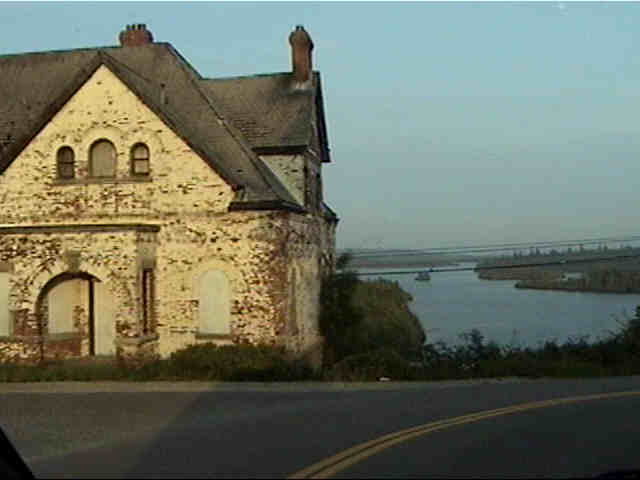The Old Cable House at Hazel Hill, Canso, NS
 |
|
| This is a picture of the Old Cable House at Hazel Hill, Canso, Guysborough Count, Nova Scotia I will try to post more pictures in the future because my grandfather Aubrey Whitman was especially fascinated with this building. In its day it was a grand brick building where the transcontinental cable was housed, but sadly, today it is just a deserted building that has paint over it grand brickwork. What a great B&B this would make... the thought crossed my mind! It has a wonderful view. This is the place where the first transatlantic cable from North America to Europe connected. Local legend has it that this is where the first distress message from the Titanic was received. Another story of note, because of its impact on the world at the time, was news of the Titanic and its tragic fate. Mr. Bill Windeler was the first at the Commercial Cable office at Hazel Hill to hear the news of her distress. Perhaps this is where the legend got started. Source: http://atlantic-cable.com/CableCos/CCC-Canso/wstory.htm Maybe there was some confusion because of a cable-laying ship that was sent to rescue the survivors: Eric Hall has this on the rescue ship: "....once the cable is laid, you still need a cable-laying ship on permanent standby in the vicinity in case the cable breaks, so that it can fish for the two broken ends, pull them up and rejoin them. As you might expect, the Commercial Cable Company had such a ship, the Mackay-Bennett, and that was on permanent standby in Halifax Harbour. And when the Titanic sank, a ship was needed without a moment's delay to go to the scene of the disaster to fish for the bodies of those who died. There was only one ship in the vicinity ready to steam at short notice and that was the Mackay-Bennett. With it being a cable-laying ship with a low freeboard and a crew accustomed to fish for broken ends of cable, it was an inspired choice. The Mackay-Bennett set sail for the scene of the Titanic disaster on 17th April 1912 from its mooring at Karlsen's Wharf at 2089 Upper Water Street, arriving at the scene on 20th April. She recovered 306 bodies, of which 116 were returned to the sea. With the remainder she then returned to her home port after 5 days and unloaded her grisly cargo at Coaling Jetty 4 (now part of the Canadian Navy dockyard). And it is for this reason that many of the victims of the Titanic disaster are buried in the cemeteries of Halifax." Source: http://www.erichall.eu/2010c39h.html#SWQc3k5QFZPdPHJX.99 For more pictures and history of the Titanic, there is a great pinterest site HERE See WHITMANIA!'s section on Nova Scotia for more information and links to the Cable Story. |
|
Contributed by P.D. Crowe